Plates + candlesticks + knobs = DIY tiered jewelry trays

This one is for Alyson. She’s been asking me to blog about jewelry storage ideas for, um, years. I’ve had this tiered jewelry tray idea in the back of my mind for a long time. The delay came down to finding the right glue. I think I’ve found it — well, almost. This is the best glue by far for gluing glass to glass or ceramic to glass — and I’ve tried just about all of them. But there’s one caveat. (More on that later.) (This post contains affiliate links. If you use these links to buy something, I may earn a small commission. You can read my full disclosure here.)
The large tiered jewelry tray is great for watches, bracelets, brooches, and rings. The smaller one is ideal for earrings. Or you could just make the larger one and use it for both purposes. Click here to learn how to make the beaded mirror in the photo above.

The three small plates are from a salvage yard. The medium plate is from Ikea. The large plate is from Crate & Barrel. If the Crate & Barrel plate looks lopsided, that’s because it’s intentionally designed that way. I’ve had the salvaged plates for years. It took me a long time to find larger plates that were the same bluish-white color and the same basic shape. It wasn’t easy. The candlesticks were a thift-store find. And the knob is from The Home Depot.
What glue to use for: glass to glass, ceramic to glass, and ceramic to ceramic
Let’s start with what doesn’t work:
- Hot glue — Despite what everyone seems to think, hot glue is not a miracle glue. It comes right off of glass as soon as it cools.
- Clear silicone — It peels off easily — and it reeks while it cures for 24 hours.
- E-6000 glue — Great glue, just not for glass. It seems to hold for a while, but it pops off when the temperature changes.
- Two-part epoxy — Too messy and complicated, in my opinion.

I used Loctite Super Glue for these projects. I figured it would be perfect for gluing glass to glass. It even has a picture of a broken wine glass being glued back together. And it’s dishwasher safe! Win-win.
The drawback
After a few hours, it spreads a white filmy residue around the glued area. In most cases it’s no problem. You simply wipe the white film away with a dry cloth. But what do you do when you can’t get at the film to wipe it off? That’s what happened with my glass candlesticks. The white residue appeared between the candlestick and the plate — and there was nothing I could do about it.

If you look closely, you can see my fingerprint in the white residue. I swear I washed the candlesticks (and my hands) with soap and water right before gluing. But somehow, the glue reacted with something in my skin to make those prints. I wish I knew what the solution was.
Loctite sells a glue specifically for glass, and I have to hope that it doesn’t suffer from the same flaw. But I don’t know for sure because I haven’t tried it yet. The only reason I didn’t try it this time is because it’s not designed for gluing ceramic or china.

Despite the unfortunate fog factor, Loctite Super Glue does the trick. It holds like nothing else I’ve tried. And a little goes a long way. I glued both jewelry trays and mirror with one small 4-gram bottle, and I still have glue left. And it’s a bonus that it’s dishwasher safe.
My glue recommendations
- Glue glass to glass: Try Loctite Glass Glue
. I have no doubt that it will work. I do, however, have my doubts about whether it will leave a white fog behind in trapped areas. (If you try it, please let us know what happens.)
- Glue glass to ceramic: Use Loctite Super Glue
, unless 1) your glass is clear and 2) there will be trapped open space next to the glue. In that case, try Loctite’s Glass Glue instead.
- Glue ceramic to ceramic: Use Loctite Super Glue. It holds, and the fog is a non-issue.
(This post is NOT sponsored by Loctite. It just happens to be the glue that I like for this kind of thing.)
How to make tiered jewelry trays
SUPPLIES & TOOLS
INSTRUCTIONS

1. This glue says you have 15 seconds to reposition it. It’s more like 5 seconds. I eyeballed the placement of the candlesticks, and they ended up a little off-center because I couldn’t adjust them after the glue set. So I recommend you place the candlestick in the center of the plate (use a ruler to make sure it’s the true center), then trace around the outside edge of the base of the candlestick (onto the plate) with a china marker.
Tip: Make sure you don’t get glue on your china-marker line because it won’t wipe off after the glue dries!

2. Apply a thin line of glue to the top edge of your first candlestick. Turn it upside down and place it in the center of the marked circle on the bottom of the smallest plate. Wait a minute or so, then wipe away the china marker with a paper towel. Then apply glue to the bottom edge of the candlestick, center it on the top of the middle plate, and so on until all the pieces are glued together.

3. Apply glue to the top inside edge of the glass knob. Place a glass gem on the glue. Press down gently. Let it set for a few minutes.

4. Finally, glue the knob in the center of the top plate using the same method as step #1 and 2.

The small earring rack is made the same way, minus the bottom plate. The glue sets fast, so you can load these jewelry stackers with your favorite jewelry almost immediately.

Share this story
Reader Gallery
Made this project? Email your photo(s) to monica (at) craftynest (dot) com, and I’ll share your version here!

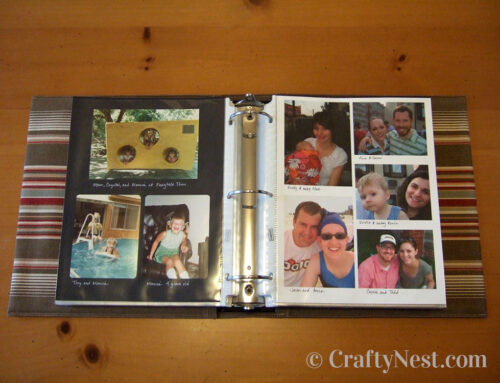
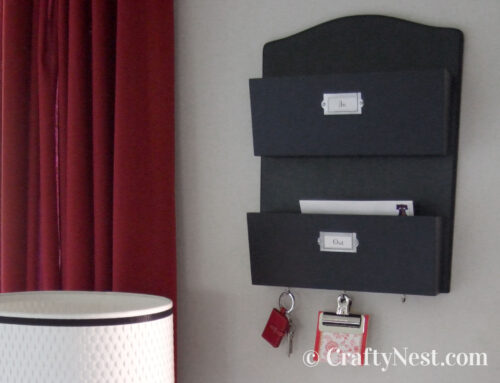
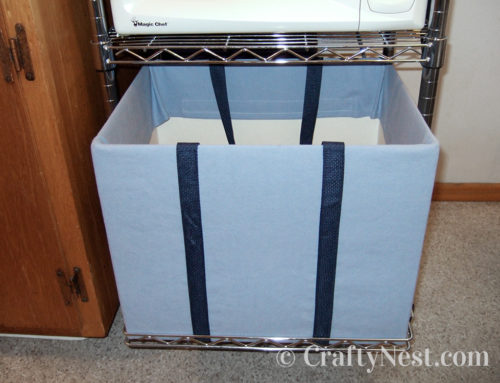
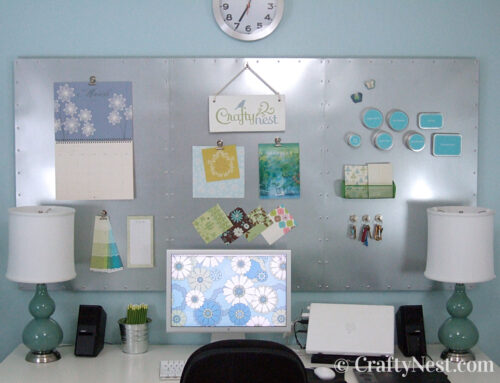
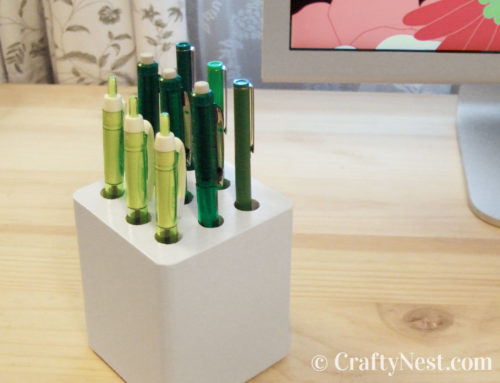
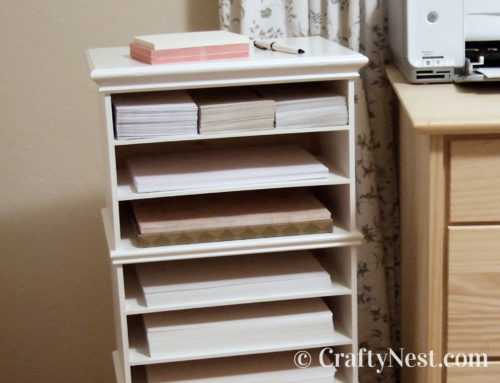
Leave A Comment